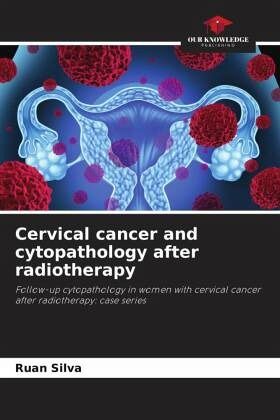
Cervical cancer and cytopathology after radiotherapy
Follow-up cytopathology in women with cervical cancer after radiotherapy: case series
Versandkostenfrei!
Versandfertig in 6-10 Tagen
27,99 €
inkl. MwSt.

PAYBACK Punkte
14 °P sammeln!
Cervical cancer is the third most common cancer in the female population, with an estimated 16,370 new cases in 2018-2019, with a risk of 15.43 per 100,000 women. According to the José Alencar Gomes da Silva National Cancer Institute (INCA), excluding non-melanoma skin tumours, cervical cancer is the most common cancer in the North of Brazil (25.62/100,000), the second most common in the Northeast (20.47/100,000) and Midwest (18.32/100,000) and ranks fourth in the South (14.07/100,000) and Southeast (9.97/100,000) (1). Infection with the Human Papillomavirus (HPV) occurs in around 10 to 20 pe...
Cervical cancer is the third most common cancer in the female population, with an estimated 16,370 new cases in 2018-2019, with a risk of 15.43 per 100,000 women. According to the José Alencar Gomes da Silva National Cancer Institute (INCA), excluding non-melanoma skin tumours, cervical cancer is the most common cancer in the North of Brazil (25.62/100,000), the second most common in the Northeast (20.47/100,000) and Midwest (18.32/100,000) and ranks fourth in the South (14.07/100,000) and Southeast (9.97/100,000) (1). Infection with the Human Papillomavirus (HPV) occurs in around 10 to 20 per cent of the sexually active female population aged between 15 and 49 and is already well understood as the main predisposing factor to cervical cancer, being a necessary but not sufficient condition (2,3). Among the risk cofactors involved in cervical carcinogenesis are: sexually transmitted infections, early onset of sexual activity, multiple sexual partners, use of oral contraceptives, smoking, nutritional deficiency and immunological status.




